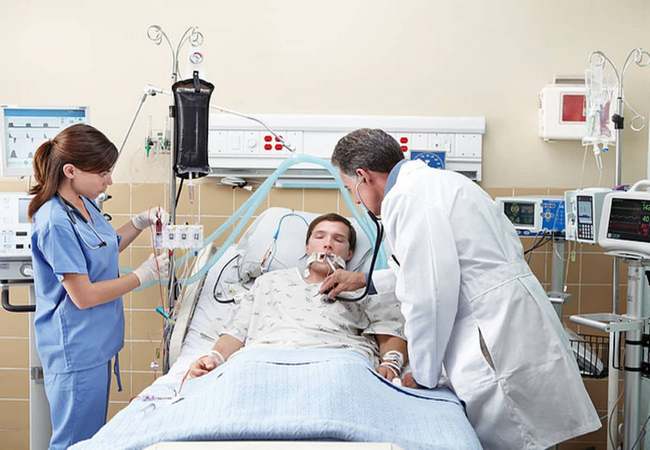Definition of Mechanical Ventilation:
Mechanical ventilation is a supportive therapy used to assist patients who are unable to maintain adequate oxygenation or carbon dioxide elimination. These patients usually exhibit signs of acute respiratory failure and are not candidates for less invasive methods of respiratory support.

It can be defined as the technique through which gas is moved toward and from the lungs through an external device connected directly to the patient.
The clinical objectives of mechanical ventilation can be highly diverse:
- To maintain gas exchange, to reduce or substitute respiratory effort,
- To diminish the consumption of systemic and/or myo-cardiac O2,
- To obtain lung expansion, to allow sedation, anesthesia and muscle relaxation, and to stabilize the thoracic wall, etc.
Indications of Mechanical Ventilation:
Common medical indications include-
- Acute lung injury (including ARDS, trauma).
- Apnea with respiratory arrest, including cases from intoxication.
- Acute severe asthma, requiring intubation.
- Chronic obstructive pulmonary disease (COPD).
- Acute respiratory acidosis with partial pressure of carbon dioxide (pCO 2)> 50 mmHg and pH < 7.25, which may be due to paralysis of the diaphragm due to Guillain-Barré syndrome, myasthenia gravis, motor neuron disease, spinal cord injury, or the effect of anaesthetic and muscle relaxant drugs.
- Increased work of breathing as evidenced by significant tachypnea, retractions, and other physical signs of respiratory distress.
- Hypoxemia with arterial partial pressure of oxygen (PaO 2) <55 mm Hg with supplemental fraction of inspired oxygen (Fio 2) = 1.0
- Hypotension including sepsis, shock, congestive heart failure.
- Neurological diseases such as muscular dystrophy and amyotrophic lateral Sclerosis.
Contraindications of Mechanical Ventilation:
- Tension Pneumothorax – it will get worse.
- Hypovolemic shock – cardiac output will decrease.
- Broncho pleural fistula – it won’t heal.
- High intracranial pressure – it will get higher.
- Right ventricular failure the failing right ventricle may fail more with the addition or increased after load.
Complications of Mechanical Ventilation:
It is often a life-saving intervention, but carries potential complications including-
- Pneumothorax,
- Airway injury,
- Alveolar damage,
- Ventilator-associated pneumonia,
- Oral trauma,
- Broken teeth,
- Intubation of the main stem,
- Tracheal stenosis,
- Dilatation, necrosis,
- Infection,
- Edema, and
- Swallowing dysfunction.
Other complications include-
- Diaphragm atrophy,
- Decreased cardiac output,
- Oxygen toxicity,
- One of the primary complications that presents in patients mechanically ventilated is acute lung injury (ali)/acute respiratory distress syndrome
- Stress ulcer, paralytic ileus inadequate nutrition.

Maria Khatun Mona is a Founder and Editor of Nursing Exercise Blog. She is a Nursing and Midwifery Expert. Currently she is working as a Registered Nurse at Evercare Hospital, Dhaka, Bangladesh. She has great passion in writing different articles on Nursing and Midwifery. Mail her at “maria.mona023@gmail.com”
